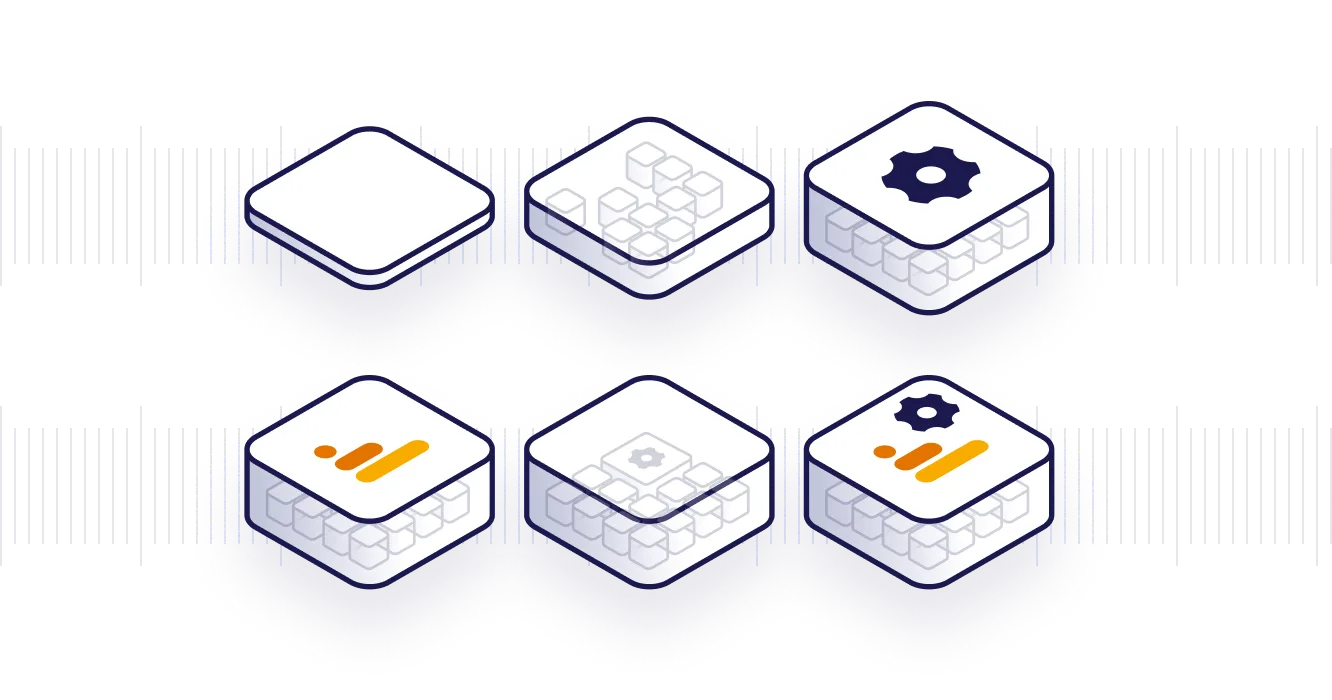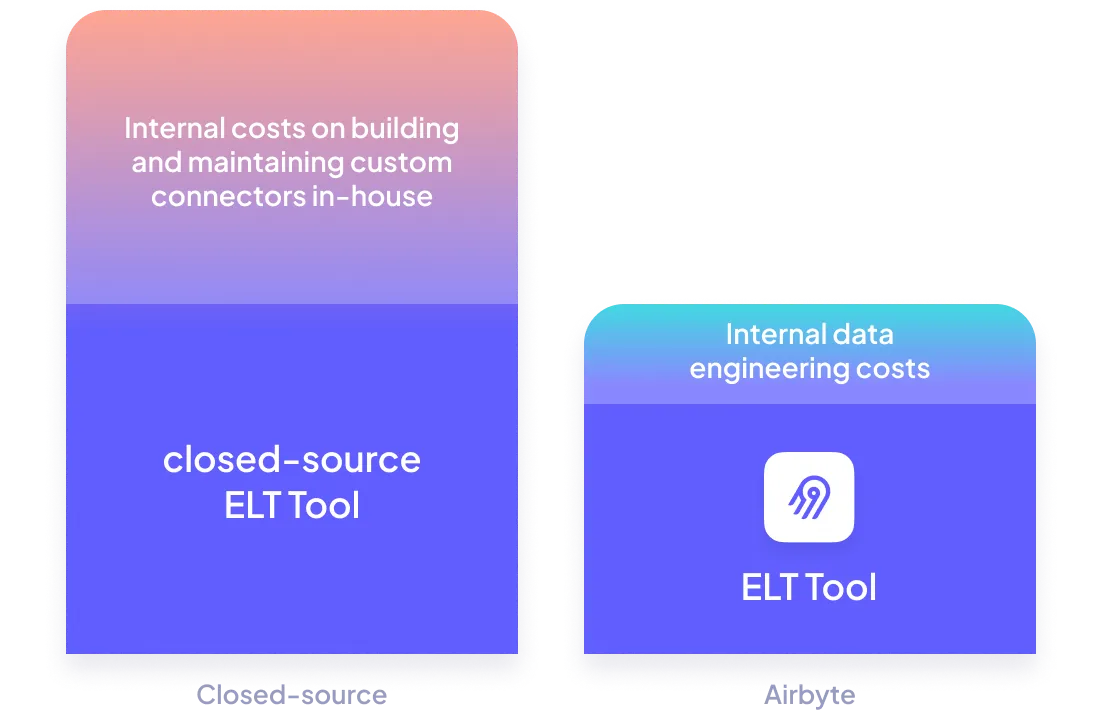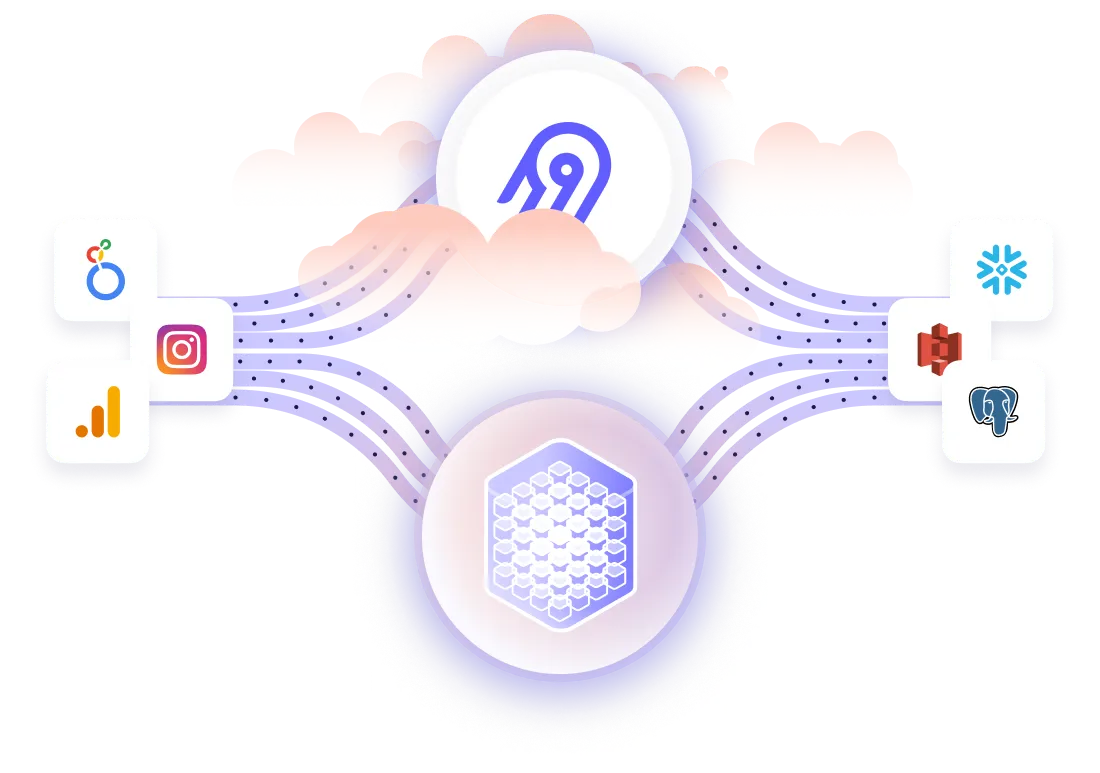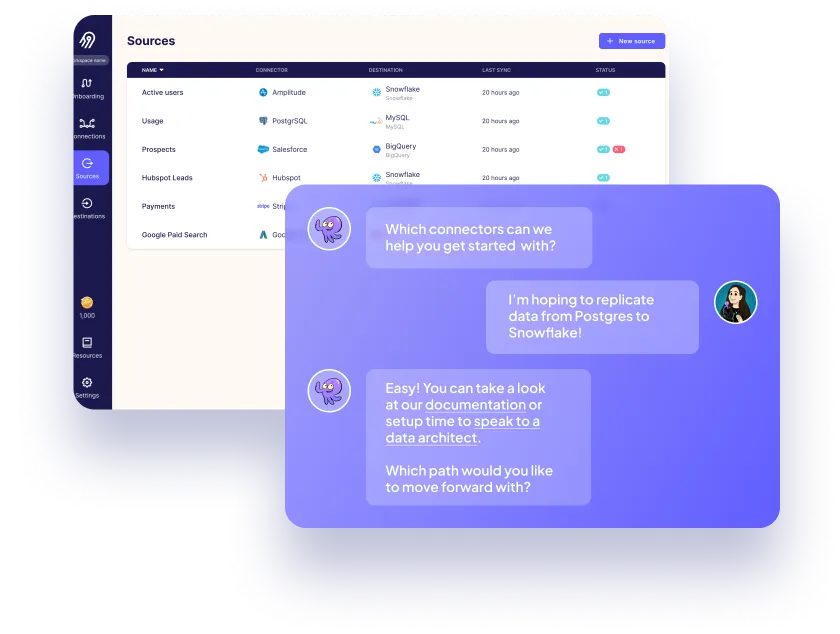
Top companies trust Airbyte to centralize their Data








Sync your Data
Ship more quickly with the only solution that fits ALL your needs.
As your tools and edge cases grow, you deserve an extensible and open ELT solution that eliminates the time you spend on building and maintaining data pipelines
Leverage the largest catalog of connectors

Cover your custom needs with our extensibility

Free your time from maintaining connectors, with automation
- Automated schema change handling, data normalization and more
- Automated data transformation orchestration with our dbt integration
- Automated workflow with our Airflow, Dagster and Prefect integration

Reliability at every level



Airbyte Open Source
Airbyte Cloud
Airbyte Enterprise

Why choose Airbyte as the backbone of your data infrastructure?
Keep your data engineering costs in check

Get Airbyte hosted where you need it to be
- Airbyte Cloud: Have it hosted by us, with all the security you need (SOC2, ISO, GDPR, HIPAA Conduit).
- Airbyte Enterprise: Have it hosted within your own infrastructure, so your data and secrets never leave it.

White-glove enterprise-level support
Including for your Airbyte Open Source instance with our premium support.


Fnatic, based out of London, is the world's leading esports organization, with a winning legacy of 16 years and counting in over 28 different titles, generating over 13m USD in prize money. Fnatic has an engaged follower base of 14m across their social media platforms and hundreds of millions of people watch their teams compete in League of Legends, CS:GO, Dota 2, Rainbow Six Siege, and many more titles every year.
Ready to get started?
FAQs
What is ETL?
ETL, an acronym for Extract, Transform, Load, is a vital data integration process. It involves extracting data from diverse sources, transforming it into a usable format, and loading it into a database, data warehouse or data lake. This process enables meaningful data analysis, enhancing business intelligence.
Apache Kafka is an open-source distributed event streaming platform that is used to handle real-time data feeds. It is designed to handle high volumes of data and provide real-time processing and analysis of data streams. Kafka is used by many companies for various purposes such as data integration, real-time analytics, and messaging. It is highly scalable and fault-tolerant, making it a popular choice for large-scale data processing. Kafka provides a publish-subscribe model where producers publish data to topics, and consumers subscribe to those topics to receive the data. It also provides features such as data retention, replication, and partitioning to ensure data reliability and availability.
A communication solutions agency, Kafka is a cloud-based / on-prem distributed system offering social media services, public relations, and events. For event streaming, three main functionalities are available: the ability to (1) subscribe to (read) and publish (write) streams of events, (2) store streams of events indefinitely, durably, and reliably, and (3) process streams of events in either real-time or retrospectively. Kafka offers these capabilities in a secure, highly scalable, and elastic manner.
Kafka's API gives access to various types of data, including:
1. Event data: Kafka is primarily used for streaming event data, such as user actions, sensor readings, and log data.
2. Metadata: Kafka provides metadata about the topics, partitions, and brokers in a cluster.
3. Consumer offsets: Kafka tracks the offset of each message consumed by a consumer, allowing for reliable message delivery.
4. Producer metrics: Kafka provides metrics on the performance of producers, such as message send rate and error rate.
5. Consumer metrics: Kafka provides metrics on the performance of consumers, such as message consumption rate and lag.
6. Log data: Kafka stores log data for a configurable amount of time, allowing for historical analysis and debugging.
7. Administrative data: Kafka provides APIs for managing topics, partitions, and consumer groups.
Overall, Kafka's API gives access to a wide range of data related to event streaming, metadata, performance metrics, and administrative tasks.
What is ELT?
ELT, standing for Extract, Load, Transform, is a modern take on the traditional ETL data integration process. In ELT, data is first extracted from various sources, loaded directly into a data warehouse, and then transformed. This approach enhances data processing speed, analytical flexibility and autonomy.
Difference between ETL and ELT?
ETL and ELT are critical data integration strategies with key differences. ETL (Extract, Transform, Load) transforms data before loading, ideal for structured data. In contrast, ELT (Extract, Load, Transform) loads data before transformation, perfect for processing large, diverse data sets in modern data warehouses. ELT is becoming the new standard as it offers a lot more flexibility and autonomy to data analysts.










